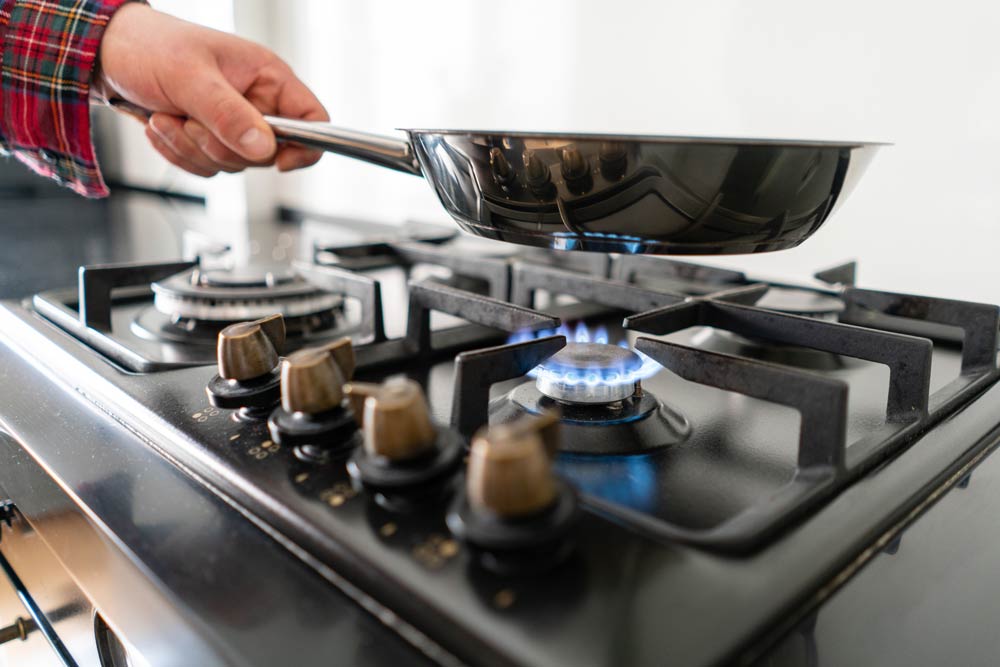The truth is there are contaminants in the air inside your home and you may be breathing them in everyday.
Your home is your sanctuary, safe and inviting. But the air in your home can be dangerous. Indoor Air Quality (IAQ) isn’t something that most homeowners or renters think about. But recent studies prove that indoor air pollution can lead to drowsiness, discomfort, and even serious illness.This is caused by airborne viruses, airborne mold and airborne bacteria.
According to a Berkeley Lab study, “…the aggregate health consequences of poor indoor air quality…are as significant as those from all traffic accidents or infectious diseases in the United States.”
We want to help you learn the truth about the contaminants in the indoor air you breathe every day. And how to control them. Breathing fresh, clean, and pure air helps your family live happier and healthier.
So let’s find out more…
According to a Berkeley Lab study, “…the aggregate health consequences of poor indoor air quality…are as significant as those from all traffic accidents or infectious diseases in the United States.”
We want to help you learn the truth about the contaminants in the indoor air you breathe every day. And how to control them. Breathing fresh, clean, and pure air helps your family live happier and healthier.
So let’s find out more…


Why is the Air Quality in the Home Unhealthy?
The movement toward air tight homes started with the energy crisis of the 1970s. The cost of oil was so high that energy efficiency became a top priority in new building and design. The home construction industry responded with better insulation, roofing, and more efficient HVAC systems. And now, with today’s global concern with climate change, energy efficiency is an even greater priority.
The result is less fresh air flowing through homes, making the air quality more toxic. You can reduce your risk of breathing unhealthy air in your home by understanding and controlling dangerous pollutants.
Here’s more about common indoor air pollutants, some which may surprise you.
The result is less fresh air flowing through homes, making the air quality more toxic. You can reduce your risk of breathing unhealthy air in your home by understanding and controlling dangerous pollutants.
Here’s more about common indoor air pollutants, some which may surprise you.
Germs in the House from Biological Contaminants
Did you know that common infectious diseases and annoying sinus and respiratory problems are transmitted through the air? Dust, mold, and mildews hiding in your home constantly release disease-causing toxins.
For example, people think that cold and flu season is in the winter because it’s cold outside. But that’s not true. We are more susceptible to colds and flu because we’re inside more often. And inside there are higher concentrations of airborne cold and flu viruses.
For example, people think that cold and flu season is in the winter because it’s cold outside. But that’s not true. We are more susceptible to colds and flu because we’re inside more often. And inside there are higher concentrations of airborne cold and flu viruses.
If you suffer from sneezing, watery eyes, or coughing you may be allergic to the air in your own home. Other symptoms include shortness of breath, dizziness, lethargy, fever, and digestive problems.
More serious diseases transmitted by air are tuberculosis, measles, staphylococcus infections, and Legionella. So let’s take a look at some of the biological contaminants, or germs, in your home.
More serious diseases transmitted by air are tuberculosis, measles, staphylococcus infections, and Legionella. So let’s take a look at some of the biological contaminants, or germs, in your home.
Mold in the House
Indoor molds can cause health problems because they produce allergens and irritants. If you inhale or touch mold or mold spores, you may get reactions such as sneezing, runny nose, red eyes, and a skin rash. If you’re an asthma sufferer, molds can also cause asthma attacks.
Mold is a fungus that grows as a multicellular filament called hyphae. Hyphae cause biodegradation of natural materials such as food, paper, or wood. Mold needs water to grow, so the major source for mold in your house is in places where moisture is allowed to accumulate. Or from moisture in the air.
The best way to eliminate mold in your home is to control moisture.
Mold is a fungus that grows as a multicellular filament called hyphae. Hyphae cause biodegradation of natural materials such as food, paper, or wood. Mold needs water to grow, so the major source for mold in your house is in places where moisture is allowed to accumulate. Or from moisture in the air.
The best way to eliminate mold in your home is to control moisture.
Fix the sources of surface water problems such as leaks from indoor pipes, seepage in places such as the cellar or attic, and condensation from your air conditioner.
Control the moisture in the air by keeping a comfortable indoor humidity of 30-60%. To do this, vent bathrooms, dryers, and other sources of water and steam from within your home. Air conditioners and de-humidifiers are also a great way to dry the air. Use exhaust fans when you’re cooking or cleaning and increase the ventilation throughout your home when you can.
Molds can grow on wood, paper, carpet, and food…so wherever you find moisture, dry it up and do everything you can to prevent condensation.
Control the moisture in the air by keeping a comfortable indoor humidity of 30-60%. To do this, vent bathrooms, dryers, and other sources of water and steam from within your home. Air conditioners and de-humidifiers are also a great way to dry the air. Use exhaust fans when you’re cooking or cleaning and increase the ventilation throughout your home when you can.
Molds can grow on wood, paper, carpet, and food…so wherever you find moisture, dry it up and do everything you can to prevent condensation.
Dust in the House
Indoor dust can include tiny bits of organic matter such as plants, skin, soil, insects, food, fibers, and animal matter (see Pet Dander below). It can also be parts of your carpet or furniture as they slowly deteriorate. It’s estimated that one-third of the dust in your home comes from indoor inorganic sources like carpet fibers. Two-thirds comes from both soil tracked in and outdoor air particles.
One of the most powerful biological allergens in the house is caused by dust mites, according to the U. S. Environmental Protection Agency (EPA). It’s not the dust mites themselves that cause problems, it’s the mite feces that can cause an allergic person to suffer asthma or nasal allergy symptoms.
Pet dander and pollen are the other two organic sources of dust that cause some people allergic reactions. See below for more on these.
Find out more about the dangers of inorganic dust from everyday products and materials in your home.
One of the most powerful biological allergens in the house is caused by dust mites, according to the U. S. Environmental Protection Agency (EPA). It’s not the dust mites themselves that cause problems, it’s the mite feces that can cause an allergic person to suffer asthma or nasal allergy symptoms.
Pet dander and pollen are the other two organic sources of dust that cause some people allergic reactions. See below for more on these.
Find out more about the dangers of inorganic dust from everyday products and materials in your home.


Pet Dander
There’s a good chance that you are a happy pet owner who loves your animal and couldn’t imagine life without them. In fact, according to the American Society for the Prevention of Cruelty to Animals (ASPCA) it’s estimated that there are 70-80 million dogs and 74-96 million cats owned in the U. S. 37-47% of all households have a dog and 30-37% have a cat.
All of those pets produce allergens from their skin, saliva, urine, and feces. Cats cause allergies because of the Fel d 1 protein produced by their skin, saliva, and sebaceous glands. In dogs, it’s the Can f 1 and Can f 2 protein that trigger allergic reactions. These microscopic pet allergens remain suspended in the air for long periods of time and they easily stick to furniture, bedding, and fabrics.
For many people, animal allergens may cause them to experience congestion, sneezing, runny nose, wheezing, and tightness in the chest. Each individual is different, but controlling pet dander is a big problem for many.
All of those pets produce allergens from their skin, saliva, urine, and feces. Cats cause allergies because of the Fel d 1 protein produced by their skin, saliva, and sebaceous glands. In dogs, it’s the Can f 1 and Can f 2 protein that trigger allergic reactions. These microscopic pet allergens remain suspended in the air for long periods of time and they easily stick to furniture, bedding, and fabrics.
For many people, animal allergens may cause them to experience congestion, sneezing, runny nose, wheezing, and tightness in the chest. Each individual is different, but controlling pet dander is a big problem for many.
Pollen in the House
Pollens originate from plants. They get inside your home through open doors and windows or tracked and carried in on clothing. Many pollens are allergens that contribute to allergic disease and asthma. Even though these large size pollen grains quickly settle, they can return to the air when disturbed.
Scientists believe that climate change and resultant warmer temperatures will cause pollen season to start earlier in the year.
Scientists believe that climate change and resultant warmer temperatures will cause pollen season to start earlier in the year.
According to the Berkeley Lab, “Between 1995 and 2013, the ragweed pollen season increased in 10 or 11 central U. S. and Canadian cities by 1-27 days per year…” And higher temperatures and higher carbon dioxide levels are linked to increased plant biomass, which could potentially cause them to create even more pollen.
Controlling Mold, Dust, Dander, and Pollen in Your Home
The keys to controlling these biological contaminants are cleanliness, adequate ventilation, and moisture control. Maintenance of heating and air conditioning systems helps along with pest management to control insect and animal allergens.
Air conditioning, vacuuming with a heavy duty HEPA filter, and a quality air purifier are all effective in controlling the organic dust, pollen, mold, and pet dander that accumulates in your indoor air.
Air conditioning, vacuuming with a heavy duty HEPA filter, and a quality air purifier are all effective in controlling the organic dust, pollen, mold, and pet dander that accumulates in your indoor air.
Combustion Caused Indoor Air Pollution
Many of us enjoy snuggling up to a warm fire during the colder months of the year. But what about the smoke that gets into the air? Does it affect our lungs? Is it healthy to breath in fireplace smoke?
Wood smoke is a mixture of gases and fine particles called particle pollution or particulate matter (PM). These particles can cause burning eyes, runny nose, and illnesses such as bronchitis. Fireplace smoke also contains several toxic air pollutants. These include: benzene, formaldehyde, acrolein, and polycyclic aromatic hydrocarbons (PAHs).
Wood smoke is a mixture of gases and fine particles called particle pollution or particulate matter (PM). These particles can cause burning eyes, runny nose, and illnesses such as bronchitis. Fireplace smoke also contains several toxic air pollutants. These include: benzene, formaldehyde, acrolein, and polycyclic aromatic hydrocarbons (PAHs).
Some people are more susceptible to the risk of wood smoke, especially if they are older and/or have heart or lung disease. Risks are greater for children, too, because their respiratory systems are still developing. They also breathe more air per pound of body weight than adults. Therefore, they are likely to take in more of the toxic smoke from your fireplace.
You can reduce the effects of fireplace and woodstove smoke in your home by burning clean, seasoned firewood. Also, get a modern fireplace insert to maximize burning efficiency and turn on your air purifier while burning.
You can reduce the effects of fireplace and woodstove smoke in your home by burning clean, seasoned firewood. Also, get a modern fireplace insert to maximize burning efficiency and turn on your air purifier while burning.

Cooking Fumes
Indoor air scientists are performing cutting edge research into cooking and its impact on air quality. At the Berkeley Lab in California, they’re finding hazardous levels of nitrogen dioxide and carbon monoxide in many of the homes they’ve studied.
In fact, indoor air pollution from using gas burners was so bad that many of the residences they observed exceeded outdoor air quality standards for several pollutants. Lab scientist Brett Singer put it this way, “If these conditions were outdoors the EPA would be cracking down. But since it’s in people’s homes, there’s no regulation requiring anyone to fix it. Reducing people’s exposure to pollutants from gas stoves should be a public health priority.”
So because you cook indoors, you may be exposed to nitrogen dioxide and formaldehyde that exceeds federal outdoor standards. And you may be exposed to carbon monoxide that exceed national ambient air standards. Keeping your indoor air clean of cooking fumes and particles should be a priority for every household.
Cooking hoods and air purification are two important solutions. Air conditioners help but quality air purifiers along with certified cooking hoods are the best ways to keep your indoor air fresh, clean, and pure while cooking.
In fact, indoor air pollution from using gas burners was so bad that many of the residences they observed exceeded outdoor air quality standards for several pollutants. Lab scientist Brett Singer put it this way, “If these conditions were outdoors the EPA would be cracking down. But since it’s in people’s homes, there’s no regulation requiring anyone to fix it. Reducing people’s exposure to pollutants from gas stoves should be a public health priority.”
So because you cook indoors, you may be exposed to nitrogen dioxide and formaldehyde that exceeds federal outdoor standards. And you may be exposed to carbon monoxide that exceed national ambient air standards. Keeping your indoor air clean of cooking fumes and particles should be a priority for every household.
Cooking hoods and air purification are two important solutions. Air conditioners help but quality air purifiers along with certified cooking hoods are the best ways to keep your indoor air fresh, clean, and pure while cooking.
 US Dollars
US Dollars
